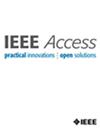Design and Implementation of Parameterized MPC Strategies for Lane Keeping Assist Systems in Real-Time HIL Architecture
IF 3.6
3区 计算机科学
Q2 COMPUTER SCIENCE, INFORMATION SYSTEMS
引用次数: 0
Abstract
The Lane Assist System (LAS) helps drivers stay within their road lanes. It uses cutting-edge technology (such as a camera system) to monitor marks for lane-following applications. The Lane Keeping Assist System (LKAS), a LAS with steering control, ensures appropriate lateral vehicle dynamics, avoiding unexpected steering operation. Despite LKAS solutions promoting comfort driving, robust steering control is lacking, requiring constant driver intervention, sometimes with premature LKAS deactivation. For this reason, this paper investigates parameterized Model-Predictive Control (MPC) solutions for real-time LKAS applications. The parameterized MPC calculates control actions for a constrained dynamic system, making it a potential candidate for robust LKAS. A sideslip and lateral speed bicycle model with three MPC formulations and various Quadratic Programming Solvers were considered. Trajectory tracking, lateral displacement and yaw angle regulation experimental tests were run through Hardware-In-the-Loop (HIL) Architecture. Experimental results, along with comparative performance and robustness analyses, demonstrate satisfactory results and provide valuable insights into the application of MPC for lane-keeping assist systems.实时HIL体系结构下车道保持辅助系统参数化MPC策略的设计与实现
车道辅助系统(LAS)帮助司机保持在他们的车道内。它使用尖端技术(如摄像系统)来监控车道跟踪应用程序的标记。车道保持辅助系统(LKAS)是一种具有转向控制功能的自动驾驶系统,可确保车辆的横向动态,避免意外的转向操作。尽管LKAS解决方案提高了驾驶舒适性,但缺乏强大的转向控制,需要驾驶员不断干预,有时会过早停用LKAS。为此,本文研究了用于实时LKAS应用的参数化模型预测控制(MPC)解决方案。参数化MPC计算约束动态系统的控制动作,使其成为鲁棒LKAS的潜在候选。考虑了具有三种MPC公式和多种二次规划求解方法的自行车侧滑和横向速度模型。通过硬件在环(HIL)架构进行了弹道跟踪、横向位移和偏航角调节实验测试。实验结果,以及比较性能和鲁棒性分析,证明了令人满意的结果,并为MPC在车道保持辅助系统中的应用提供了有价值的见解。
本文章由计算机程序翻译,如有差异,请以英文原文为准。
求助全文
约1分钟内获得全文
求助全文
来源期刊

IEEE Access
COMPUTER SCIENCE, INFORMATION SYSTEMSENGIN-ENGINEERING, ELECTRICAL & ELECTRONIC
CiteScore
9.80
自引率
7.70%
发文量
6673
审稿时长
6 weeks
期刊介绍:
IEEE Access® is a multidisciplinary, open access (OA), applications-oriented, all-electronic archival journal that continuously presents the results of original research or development across all of IEEE''s fields of interest.
IEEE Access will publish articles that are of high interest to readers, original, technically correct, and clearly presented. Supported by author publication charges (APC), its hallmarks are a rapid peer review and publication process with open access to all readers. Unlike IEEE''s traditional Transactions or Journals, reviews are "binary", in that reviewers will either Accept or Reject an article in the form it is submitted in order to achieve rapid turnaround. Especially encouraged are submissions on:
Multidisciplinary topics, or applications-oriented articles and negative results that do not fit within the scope of IEEE''s traditional journals.
Practical articles discussing new experiments or measurement techniques, interesting solutions to engineering.
Development of new or improved fabrication or manufacturing techniques.
Reviews or survey articles of new or evolving fields oriented to assist others in understanding the new area.
 求助内容:
求助内容: 应助结果提醒方式:
应助结果提醒方式:


